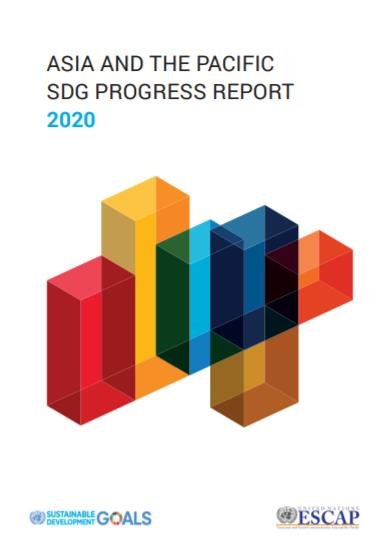- Share this article
- Subscribe to our newsletter
Asia and the Pacific SDG Progress Report 2020
Overwhelming evidence shows that the Asia-Pacific region needs to accelerate action on the Sustainable Development Goals (SDGs) states the Asia and the Pacific SDG Progress Report 2020, published by the United Nations Economic and Social Commission for Asia and the Pacific (ESCAP) in March 2020. Moreover, current negative trends must be substantially reversed, especially those which are depleting and degrading environmental resources.
The region shows poor performance on most of the measurable environmental targets of the 2030 Agenda for Sustainable Development: The share of renewable energy has dropped to 16 per cent, one of the lowest rates globally. The region also emits half of the world’s total greenhouse gas - a number which has doubled since 2000. 35 per cent of countries continue to lose their forests.
The analysis finds that the Asia-Pacific region has struggled the most with two Goals: advancing responsible consumption and production, and climate action.
Progress on SDG 4 and SDG 7
Many countries in the region are moving decisively and showing remarkable progress in improving the quality of education (Goal 4) and providing access to affordable and clean energy (Goal 7) - achieving these two Goals is well within reach, according to the report. The region is also making good progress on targets related to economic growth.
Yet, to grow more sustainably and equitably, the current economic progress of the region must be coupled with human well-being and a healthy environment. Progress has been far too slow in areas such as gender equality (Goal 5) and building sustainable cities and communities (Goal 11).
Uneven progress across subregions
Progress has also been uneven across the five Asia-Pacific subregions, most especially in reducing inequalities (Goal 10), responsible consumption and production (Goal 12), and peace, justice and strong institutions (Goal 16). A positive example of collective progress across all five subregions, however, is on access to electricity, where steady improvement is noticeable, particularly in rural areas.
Data availability for the SDG indicators has substantially increased over the past few years in Asia and the Pacific, from 25 per cent in 2017 to 42 per cent in 2020. But data is still lacking on over half of the SDG indicators, especially those Goals with slow progress. This, according to ESCAP, highlights the urgent need to strengthen the policy-data nexus in the region.
(ESCAP/ile)
Read more and download the Asia and the Pacific SDG Progress Report 2020 at the United Nations ESCAP website





Add a comment
Be the First to Comment